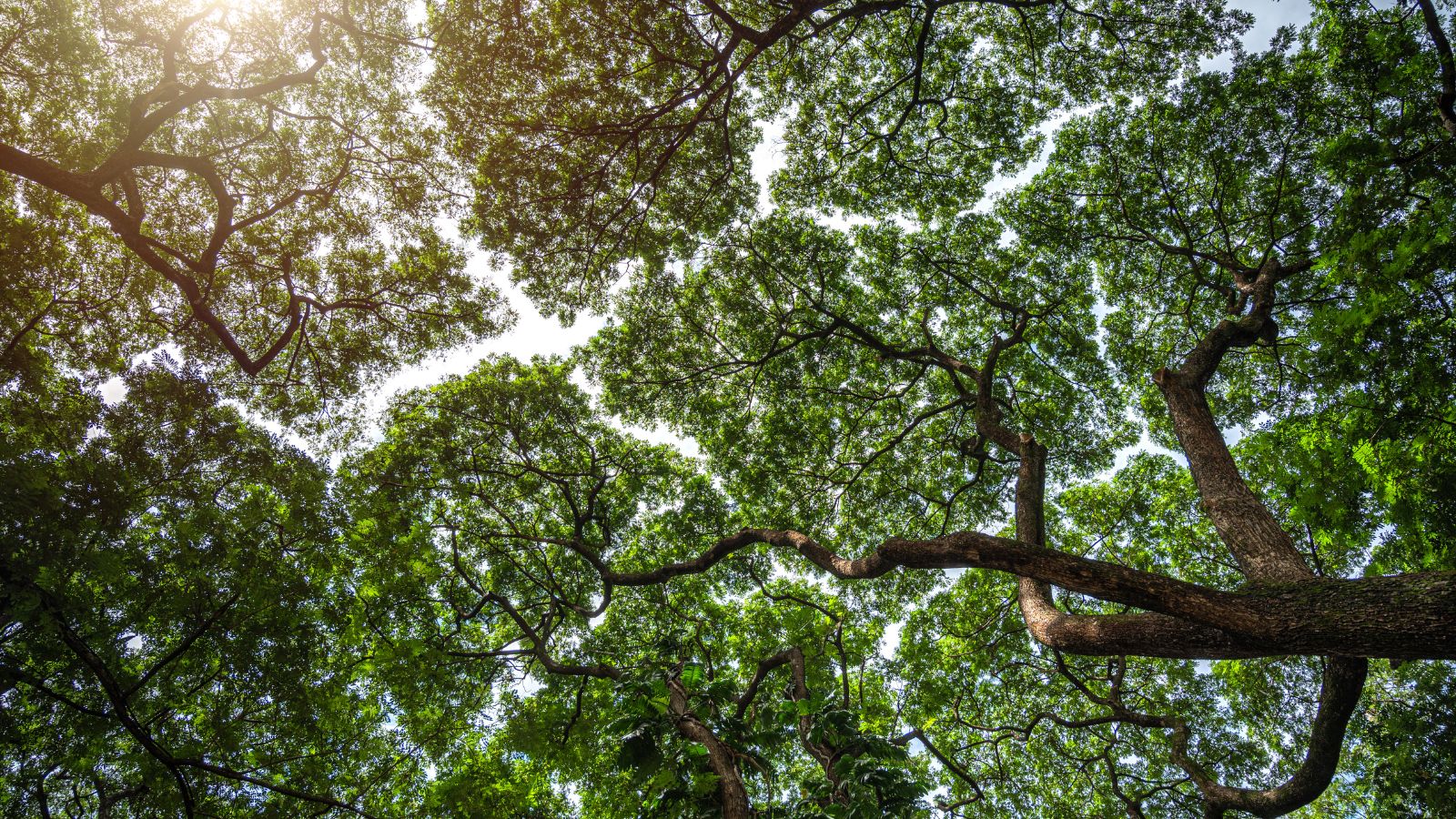If you walk through certain forests and glance upward, you might notice something unusual: the treetops don’t always form a continuous green canopy. Instead, delicate ribbons of sky weave between the crowns, as if the trees are politely keeping their distance.
This phenomenon, known as crown shyness, is seen in species such as black mangroves, camphor trees, eucalyptus, teak, and sal. In these trees, the uppermost branches stop short of touching their neighbors, creating distinct gaps when viewed from below.
Crown shyness offers more than a visual spectacle. The phenomenon is thought to play a vital role in maintaining forest health. By reducing direct branch collisions, trees minimize damage from storms and winds. The spaces provide opportunities for sunlight to reach lower branches and the forest floor, benefiting understory plants and enriching biodiversity. These channels also help rainwater penetrate the canopy, supporting healthier soil and undergrowth. It also acts as a defense against pests and pathogens spreading from tree to tree.
Researchers are studying crown shyness to develop forest management and conservation strategies that optimize tree spacing, promote health, and enhance sustainability.



